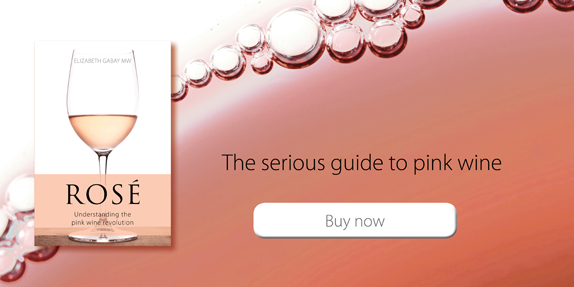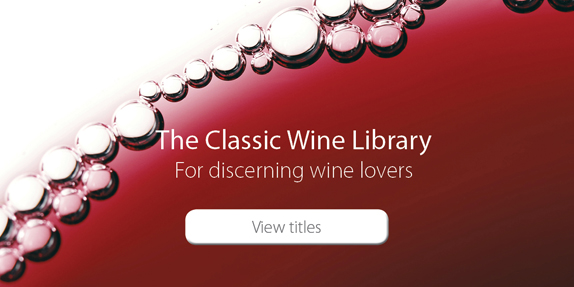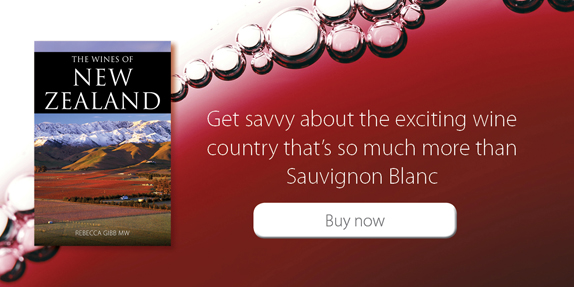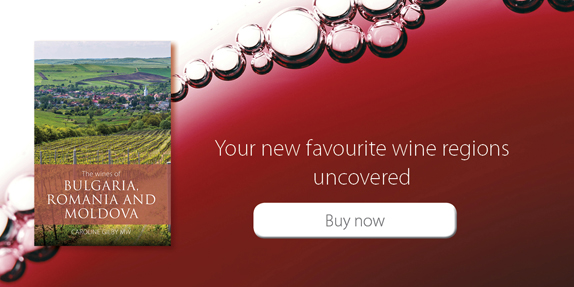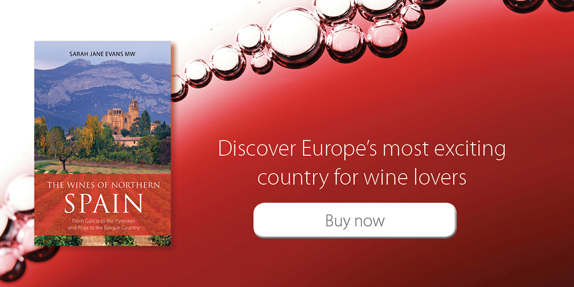Classic Wine Library
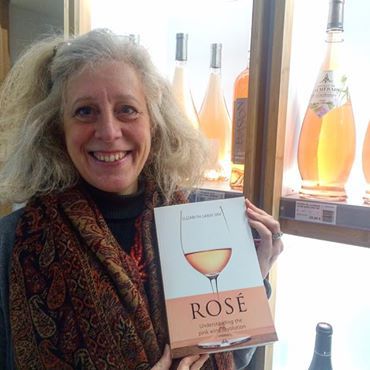
Coming up rosés – an interview with Elizabeth Gabay MW
12 October 2018 by Rebecca in Classic Wine Library, Wine and spirits
Elizabeth Gabay has been in the wine trade since 1986. She has written about and lectured on rosé wines extensively, and has judged at Decanter’s annual World Wine Awards as well as at many other competitions, including the Mondial de Rosé, the Guide de Vins de Provence and for magazine panel tastings for Decanter and Drinks Business. Elizabeth Gabay’s first book, Rosé: Understanding the pink wine revolution, part of The Classic Wine Library, was published in January 2018.
You’ve been in the wine trade for more than thirty years and became an MW in 1998 but can you remember your first experience of wine and do you think it had any influence on your choice of career?
I grew up in a family who were very continental in their approach to food and drink. Even though my parents were not great connoisseurs of fine wine, they collected wine on all of our holidays round France and I was encouraged to try, and taste. My earliest memory, to my shame, was visiting Henri Maire in the Jura. My parents loved his vin jaune – I was horrified when they bought a case, and tried to dissuade them! But others seemed to recognize my interest in wine way before me. My first wine books were given as presents when I was 16, and the university careers officer suggested I might like working in restaurants or hotels. When I travelled I did visit vineyards – but never thought of it as a potential job.
Is there a difference between wine tasting and wine enjoyment – do you ever find Elizabeth the wine taster spoiling the simple pleasure of a glass of wine?
I actually think wine tasting helps the enjoyment. Just drinking a wine fast, you may miss the moment of enjoyment. It reminds me of the film Tampopo, when the master says that one should first stop, admire the food on the plate, appreciate its look and aromas, then taste. If you just want the alcohol, just drinking is fine. But I love the moment when you mentally stop and just taste. Even with an ordinary wine. A bottle captures a past summer, a place, the work of a winemaker. It is a bit like meditation.
You’ve become a bit of an evangelist for pink wines over the last few years. Have you noticed it becoming any easier to convince people of rosé’s virtues?
Sort of … If I say I have just written a book on rosé and I live in Provence, I think the first reaction is oh yes – another PR book with lots of photos of lavender and the sea. When people see the book – the size and extent of the subject – I get their attention. If I can present in a tasting some really interesting rosés – they are converted. What I have really enjoyed is connecting up with the winemakers who are making exciting rosés and working to promote these wines.
Would you say there is a genuine revolution in the world of wine towards a more serious appreciation of rosé or is its increased popularity merely a passing fashion?
Not sure. I think it may mean the style will split. The high-volume commercial style (possibly with a bit of residual sugar) will continue to be sold alongside reds and whites in bars and chain restaurants. The fashionable, trendy wine – with maybe a designer bottle – I think might fade away as the next fashionable item takes its place. But I think the demise of the fashion statement will be good for the style as a whole as high-quality rosés are then free to emerge without being tainted by the image. Maybe taint is too strong a word – but being a fashionable drink does scare serious drinkers away.
I recently went out for a meal with a friend who’s a bit of a wine buff. He suggested we get a bottle of rosé but when, having read your book and being intrigued, I asked if he’d consider getting the Tavel he was quite adamant that we had to have the pale Provence rosé. Have you had any better luck convincing people that pale is not the only pink worth drinking?
Only if I can get them to taste the wine, and even better if they can taste the wine in a black glass. But they also have to be receptive to a rosé having a range of tastes. Some people cannot handle a complex rosé – it scares them, disorientates them.
On that occasion the owner of the restaurant actually persuaded us into drinking a Lebanese rosé (to go with our Lebanese food). As I recall it was pretty good. Where have you encountered the best rosé – perhaps unexpectedly?
Great sommelier. Best? Difficult to say one in particular, and in every region it has been more down to the winemaker than the region as a whole producing good rosé. My biggest surprise was a natural rosé made with Concorde in southern Slovakia. Fantastic wine. The winemaker kept on avoiding my questions about the variety so it went into the book with no variety listed – only later did he admit it was Concorde. Another which has caught my attention is the Negroamaro rosés of Salento in Puglia. The region produces great rosés with the ability to age – I tried a 1976 which was astonishing.
Do you have a favourite rosé that you come back to time and time again (or are you still on a mission to try as many new wines as possible)?
Still looking for new wines – the joy of wine is that there are new wines every year. And I also enjoy exploring older wines and experiencing new techniques.
Rosé is generally perceived as a (perhaps undemanding) summer drink and its popularity tends to wane as the days get cooler. Would you say that was a fair reaction or should we all be downing rosé with our winter casseroles and Christmas dinners?
I haven’t yet decided what we will eat at Christmas – so not yet sure what wine. But it is quite possible that there will be rosé. I’m tempted to suggest a rich Bandol rosé, and a sweeter Cabernet d’Anjou with cheese.
The last year has been a pretty busy one for you, with promotion of your first book on top of all your other work. Do you intend to put your feet up a bit more in 2019 or are there other projects in the pipeline?
Busy is an understatement! It has been non-stop and the new year is looking equally busy. Promoting rosé and the book has been a major part of the work and as I learn more and more I am working on the second edition – it is such a vibrant fast-moving part of the wine world. So masterclasses, tastings, writing, visiting – as I say, it has been non-stop. My next project is on the wines of Provence …
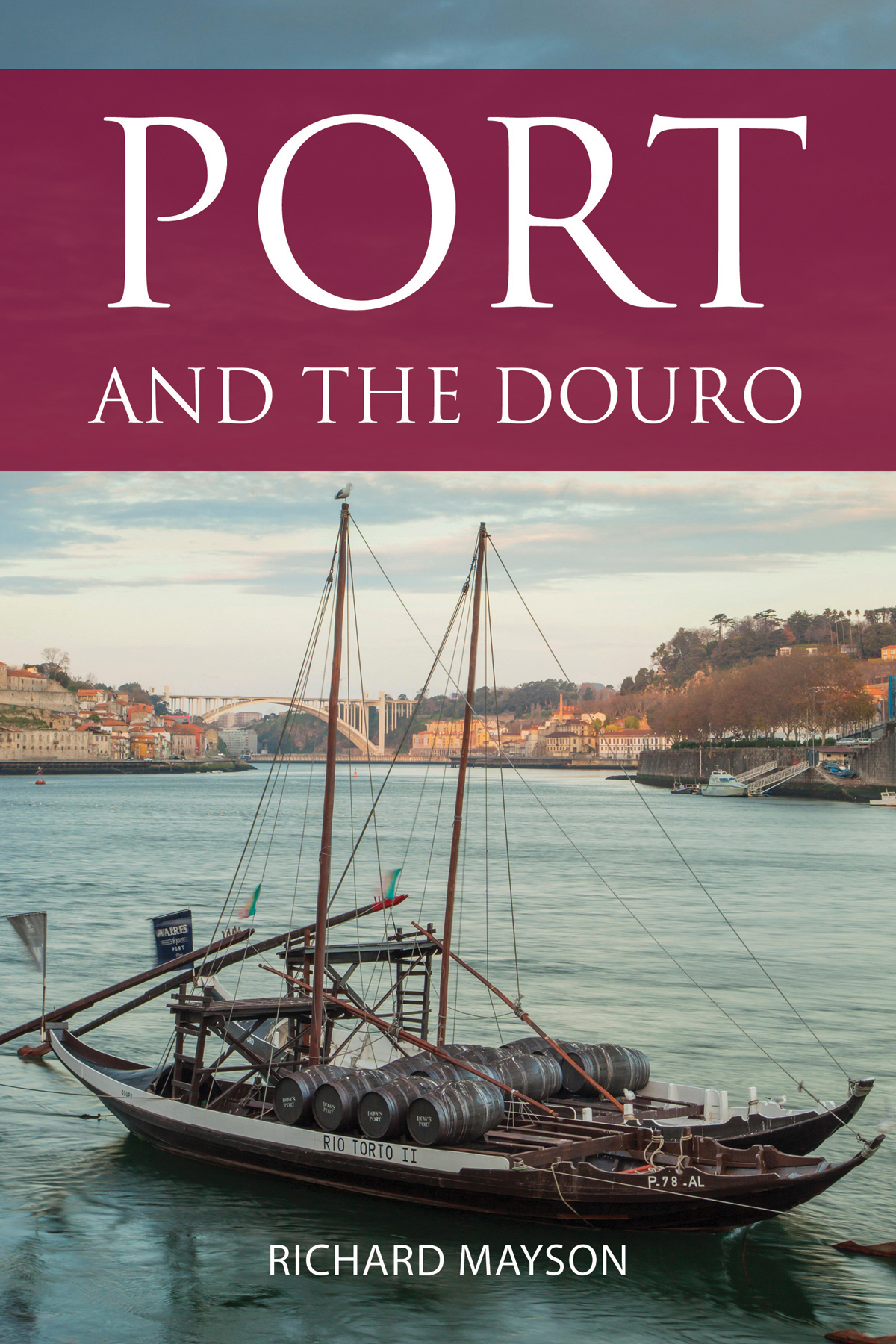
Port and the Douro – fourth edition coming soon
5 October 2018 by Rebecca in Classic Wine Library, Wine and spirits
It’s ‘the only book on Port and the Douro worth having’ and this November Infinite Ideas will be publishing the fourth edition of Richard Mayson’s classic book. Port and the Douro is a hugely readable combination of facts, expert opinion and anecdotes about prominent figures and events in the Port trade (as well as notes on the dwindling popularity of Port and lemon on Coronation Street).
A full reassessment of every quinta and shipper takes account of recent changes in fortune and ownership. The growth in Douro wines has led to a substantial rewrite of this chapter. In fact so exciting is this region that many of the makers of Douro wines now need to be given more space in Richard’s forthcoming The wines of Portugal (due out next September). Vintages are examined in detail from 1960 all the way up to the as-yet-undeclared 2017, which – spoiler alert – despite unpredictable weather, an early harvest and reduced yields may not be anything like the disaster some have predicted. Recent tastings have also allowed a re-evaluation of some vintages.
For anybody interested in the most up-to-date information on perhaps the most popular of fortified wines, this must-have book will be available in all the usual places from 19 November.
p.s. The bargain hunters among you may be interested to know that we do still have a few copies of the third edition of Port and the Douro left and we’re offering these at a promotional price of £15 while stocks last.

James Tidwell MS joins Classic Wine Library
21 September 2018 by Rebecca in Book publishing, Classic Wine Library, Wine and spirits
James Tidwell MS has joined the editorial board of the Classic Wine Library series, published by independent Oxford publisher Infinite Ideas. Tidwell, a Master Sommelier who co-founded the TEXSOM Conference, now in its fourteenth year, is a writer, speaker, consultant and entrepreneur who is expert in the worlds of wine, tea and sake. He joins current board members Sarah Jane Evans MW and Richard Mayson in working on the growing series.
Based in the USA, Tidwell will have a particular role in expanding the North American wine regions covered by the series and in increasing awareness of the Classic Wine Library among his countrymen. Joining the board James said, “This is my most treasured series, from the original Faber & Faber books to Infinite Ideas. I am thrilled to see the continuation and revitalization of the series, and am happy to be included.” The nineteenth title in the series, Anthony Rose’s Sake and the wines of Japan is published this October, along with the fourth edition of Richard Mayson’s own bestseller, Port and the Douro. Sarah Jane Evans MW was excited to be working with Tidwell, saying, “James’ knowledge is international and he brings status in the US wine community, knowledge of the current world of wine, and specifically of North American authors and the market.”
For further information on The Classic Wine Library please contact the Publisher, Richard Burton: richard@infideas.com; +44 (0)7802 443957
About James Tidwell
James Tidwell, Master Sommelier, is a writer, speaker, consultant and entrepreneur. After passing the Master Sommelier examination in 2009, he earned his Diploma from the Wine and Spirits Education Trust (WSET); Certified Wine Educator (CWE) from the Society of Wine Educators; Certified Tea Specialist from the Specialty Tea Institute, and Certified Sake Professional from the Sake Education Council. Tidwell holds a baccalaureate degree in International Trade and Finance from Louisiana State University, and earned Honours upon graduating from the Culinary Institute of America.
Tidwell co-founded the TEXSOM Conference with fellow Master Sommelier Drew Hendricks. Now in its fourteenth year, TEXSOM is the premier professional beverage education conference in the United States and among the most influential in the world. He is also Co-Owner and Producer of the TEXSOM International Wine Awards, one of America’s largest and most respected wine competitions. His writing has appeared in World of Fine Wine, Lonely Planet, Celebrated Living and The Dallas Morning News.
His industry leadership has included service on Boards of Directors and Advisory Boards for the Court of Master Sommeliers – Americas, GuildSomm, the Society of Wine Educators, the Specialty Tea Institute and the Wine and Food Foundation of Texas. He is consulting Master Sommelier with Four Seasons Hotels and Resorts in Las Colinas, Texas, which earned a Wine Spectator Best of Award of Excellence and five nominations for a James Beard Foundation Award for Outstanding Beverage Program under his direction.
Think you know New Zealand wine? Prepare to be surprised
24 July 2018 by Rebecca in Classic Wine Library, Lifestyle, Wine and spirits
Most regular wine drinkers will be familiar with Sauvignon Blanc from Marlborough, and red wine lovers may well have sampled one of the South Island’s Pinot Noirs. But how many of us have explored beyond that? New Zealand is a relatively new wine country, whose modern industry is only around 40 years old but in that time huge changes have taken place and there is now an extraordinary variety of wines coming out of these two islands.
During this century exports have increased from 19.2 million to 253 million litres, so the country’s wines are clearly popular. As the industry approaches middle age it needs to keep on its toes – the fickleness of fashion means that producers cannot rely on the continuing popularity of New Zealand ‘Savvy’. So now seems a good time to take stock. In a new book, The wines of New Zealand, master of wine Rebecca Gibb expertly takes readers through the past, present and future of New Zealand wine. Gibb notes that, “New Zealand wine has reached its early adulthood with new faces, new varieties and innovative new methods appearing at breakneck speed, and there is so much more to come. The national industry and all its many components are constantly adjusting in the vineyard, the winery and the global marketplace.”
Gibb confesses that she is “known to get excited about wine,” and that excitement proves infectious here. She guides us energetically through the history of New Zealand wine, employing a genial style that makes even the section on climate entertaining, without taking away any of its authority. Her chapter covering the grape varieties is far more than just a study of cultivars – as an MW student Gibb was awarded the Bollinger Medal for her outstanding tasting skills, and her keen abilities are put to use here in her descriptions of the flavours involved, while each of the major varieties gets its own fascinating biography, rounded off with a top 10 of ‘must try’ wines.
Gibb then takes each of the 10 main regions in turn, starting with Northland, moving southward through Hawkes Bay and Marlborough to end in the South Island at Central Otago. At last count there were 670 producers so rather than turn the book into a directory, Gibb provides a selection of producer biographies featuring the most exciting, innovative and visitor friendly winemakers, along with details on which wines to try. If Gibb’s enthusiasm has you booking a flight, the final chapter will prove invaluable, packed as it is with suggestions on wine-related places to stay and things to do. All in all the book is an invaluable resource for anyone keen to adventure beyond Sauvignon Blanc.
About the author
Rebecca Gibb MW is an award-winning wine journalist and editor. Securing her first editorial role at UK wine trade magazine Harpers after being named UK Young Wine Writer of the Year in 2006, she has since edited several print and online publications. Rebecca contributes to prestigious titles including Decanter, The World of Fine Wine, LUX and Wine Business International, in addition to running a small business, The Drinks Project.
In 2015, Rebecca became a Master of Wine. Having lived in New Zealand from 2010 to 2016 with her Kiwi husband and son, Rebecca recently returned to the UK. She maintains her strong ties with the people and wines of Aotearoa.
The wines of New Zealand is published on 30 July 2018. Review copies available from marketing@infideas.com
‘Whatever happened to Bulgaria?’ The rise and fall and rise of Eastern Europe’s wines
11 July 2018 by Rebecca in Classic Wine Library, Wine and spirits
There was a time, back in the eighties and nineties, when Bulgarian wines found many fans among those who wanted to match the reach of their palates to the limits of their pockets. But then something changed and those cherished bottles started disappearing from supermarket shelves.
The cause was a fall in quality due to the complicated land-restoration process following the fall of communism. A lack of empathy between wine producers and grape growers – many of whom were inexperienced in farming vines – caused a crisis in the industry, since most wineries did not grow their own grapes. At the same time key markets like the UK saw a huge influx of quality, affordable wines from the likes of Australia and the Americas. Romania, which had recently begun exporting to the West, suffered too as its signature Pinot Noirs found it difficult to compete with those coming out of countries like New Zealand. Romania’s neighbour Moldova had never been an exporter to the West but when its main market, Russia, brought in a ban on Moldovan wines it faced the possibility of an economic catastrophe. All three countries had to drastically change their approach to growing, creating and selling wine.
Now, as a new book by Eastern Europe wine expert Caroline Gilby MW demonstrates, these countries are finding a place on the shelves of wine sellers in the US, UK and other northern European countries. In The wines of Bulgaria, Romania and Moldova Gilby demonstrates an obvious excitement at seeing the rise in popularity of these wines: ‘I am passionate that Eastern Europe is the last undiscovered treasure trove of the wine world,’ she says.
As somebody who has been involved first in selling and then in consulting for Eastern European wine for three decades Gilby is particularly proud to see the results of this wine revolution, putting the success down to today’s wines being artisan, affordable and authentic. This is in stark contrast to the wines of the past: ‘Each country has emerged with a clear and distinctive identity,’ she says. ‘The change has been a complete revolution from communist, mass-market, wine-based alcoholic beverage, to today’s industries where an exciting raft of small producers has added interest and individuality and pushed quality forward.’
Although there are similarities between the experiences of Bulgaria, Romania and Moldova there are also distinct differences. The book tackles each country’s story in turn, examining the unique histories, geography, grape varieties and wine producers that have formed the three wine industries we see today. For wine lovers interested in discovering new wines that rival any in Western Europe or the New World this is an essential guide.
About the author
Caroline Gilby MW joined Augustus Barnett as a trainee wine buyer in 1988, working for them for seven years and becoming an MW in 1992. Since 1995 Caroline has provided wine consultancy to a range of clients, from major international PLCs to small boutique wineries. A member of the Circle of Wine Writers, Caroline contributes to magazines including Decanter, Harpers, Revija Vino and Meininger’s Wine Business International. She also writes for Hugh Johnson’s Pocket Wine Book and has contributed to several other wine guides. Caroline judges regularly at international wine competitions and is the Decanter World Wine Awards joint regional chair for North, Central & Eastern Europe. She has been President of the Vinistra Wine competition since 2014 and frequently judges in Eastern Europe.
Review copies available from marketing@infideas.com
A taste of excitement: why northern Spain is currently the place to get your wine kicks
4 May 2018 by Rebecca in Classic Wine Library, Wine and spirits
Spain is one of the world’s largest wine-producing countries. Over recent years the level of quality in wines has risen sharply and many neglected wine regions are finding new life on the world stage. Within the lifetime of many of today’s wine drinkers Spain has seen huge political, cultural and social changes, and these have had a positive effect on its wine industry.
Beyond the well known favourites of Rioja and the Tempranillo grape there is now a world of wine waiting to be discovered. So where should one begin the journey, what might we expect to find and who are the people behind these wines? So much is there to discover that the northern part of the country now merits an entire book in itself, The wines of northern Spain. In it, award-winning Spanish wine specialist Sarah Jane Evans MW delves into what she refers to as ‘the most exciting country in Europe for wine lovers’.
Perhaps the main thing that makes the country so exciting for the wine adventurer is the sheer variety on offer, for as Evans points out, ‘It is home to the new reds, the fresh, zesty Atlantic styles; the aromatic whites; the pale-coloured rosados; the traditional method sparklings; the sweet Moscatels; the wines aged under flor; and the wines from vines grown on slate, clay, limestone or sand, all expressing their origins.’
Across the regions producers are demonstrating confidence in their vinous roots and making a return to traditional varieties such as Garnacha, proving that with care in the vineyard and winery it can produce superb wines. And the northern half of Spain is also impressing with white wines that are not only pure but as sophisticated and intriguing as their red counterparts.
Evans also explores the more controversial issues, tackling the question of oak overuse and the winemakers’ efforts to create wines more suited to tastes beyond the local market, as well as addressing Spain’s history as a producer of bulk, rather than quality, wine. She also looks at current wine regulations, offering some thoughts on the way forward for the regions featured.
Clearly, attempting to include all of the area’s wine producers is not possible, so instead Evans focuses on those producers she feels are doing the most exciting work in field and cellar, and producing distinctive wines with a sense of place. She points out that the best way to understand the Spanish wine revolution is to try the wines for ourselves, and notes that while many of these wines are available outside Spain the best place to experience them is in their place of origin, alongside local food and among Spanish people. To aid our explorations she supplies a listing of some of her favourite restaurants and places to stay.
Whether or not you choose to pay a visit to the country The wines of northern Spain is the ideal gateway for all wishing to find out more about the wines of this rapidly evolving region.
Review copies available from marketing@infideas.com

